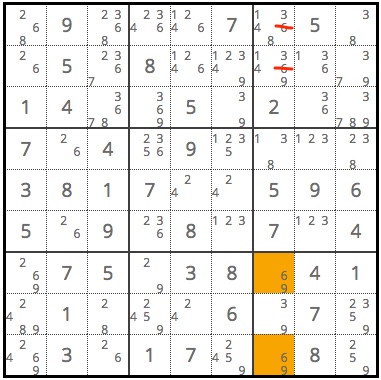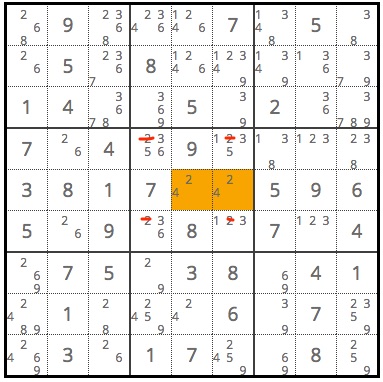The pointing pair technique can be used to eliminate number candidates from cells. It usually involves two cells but it can also involve three cells, which would be called a pointing triple. When you have a box and a certain number inside of that box has been limited to a single row or column, you can then eliminate that number from the rest of the row, column, or box. It gets its name from the concept that the pair or triple that you have found points the rest of the way eliminating that number in other places.

Pointing pairs can also be used to eliminate numbers from a box. If a pair or triple represents the last remaining spots for a specified number in a row or column and is contained in a box, then that number can be eliminated from the rest of the box. See example below.
